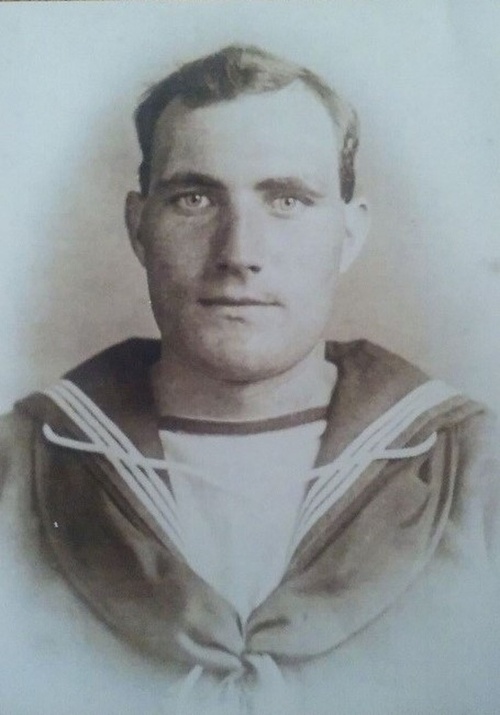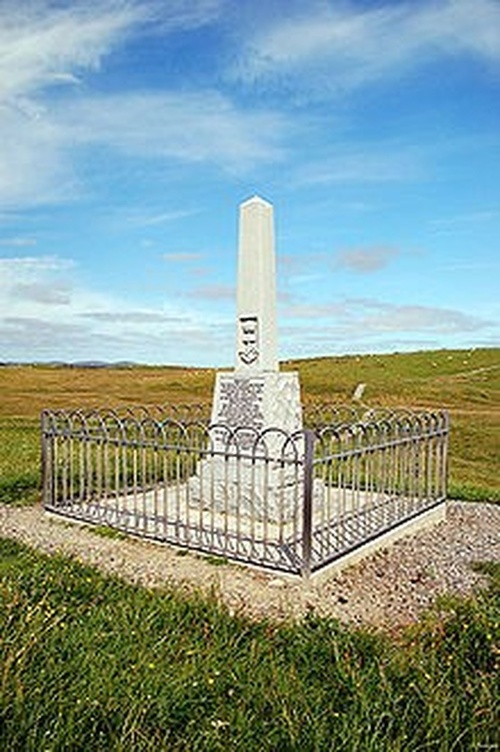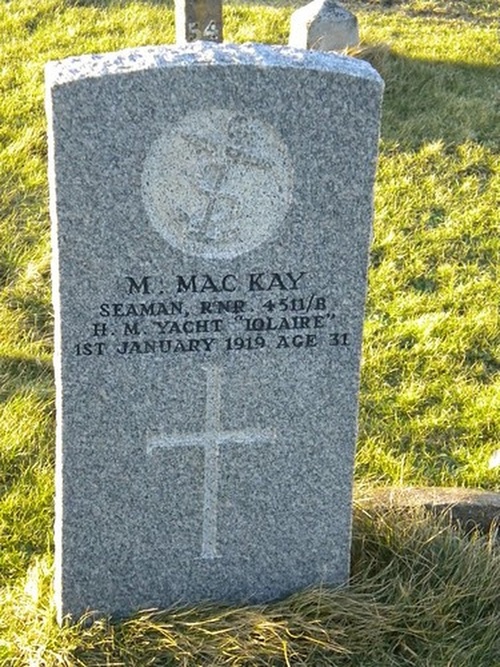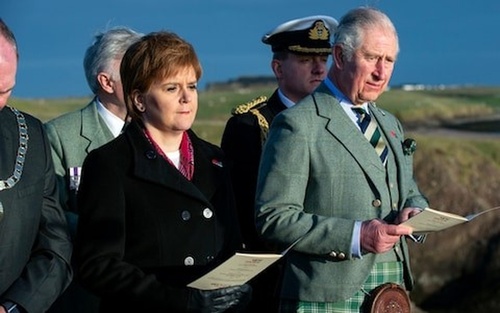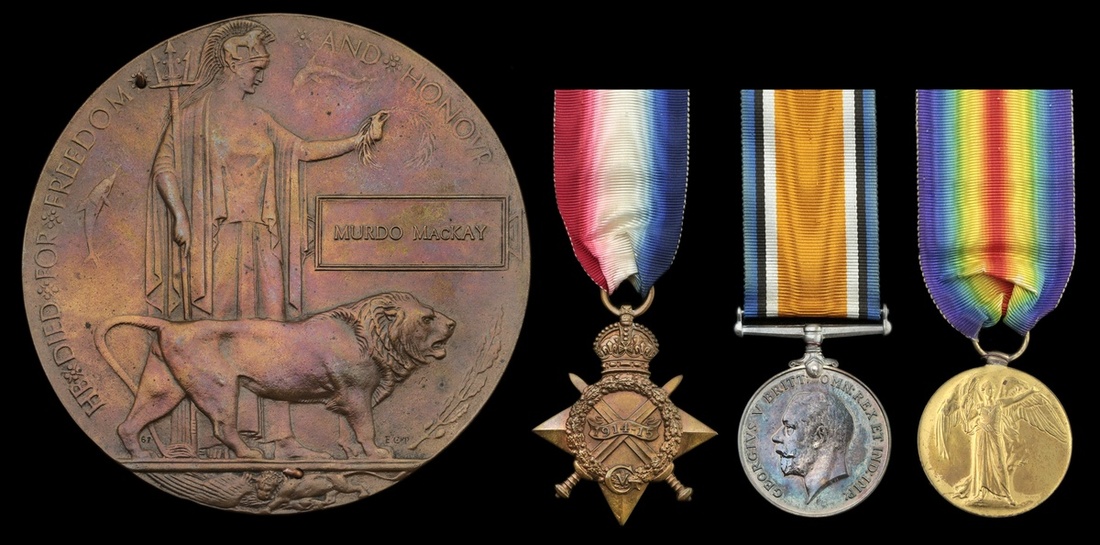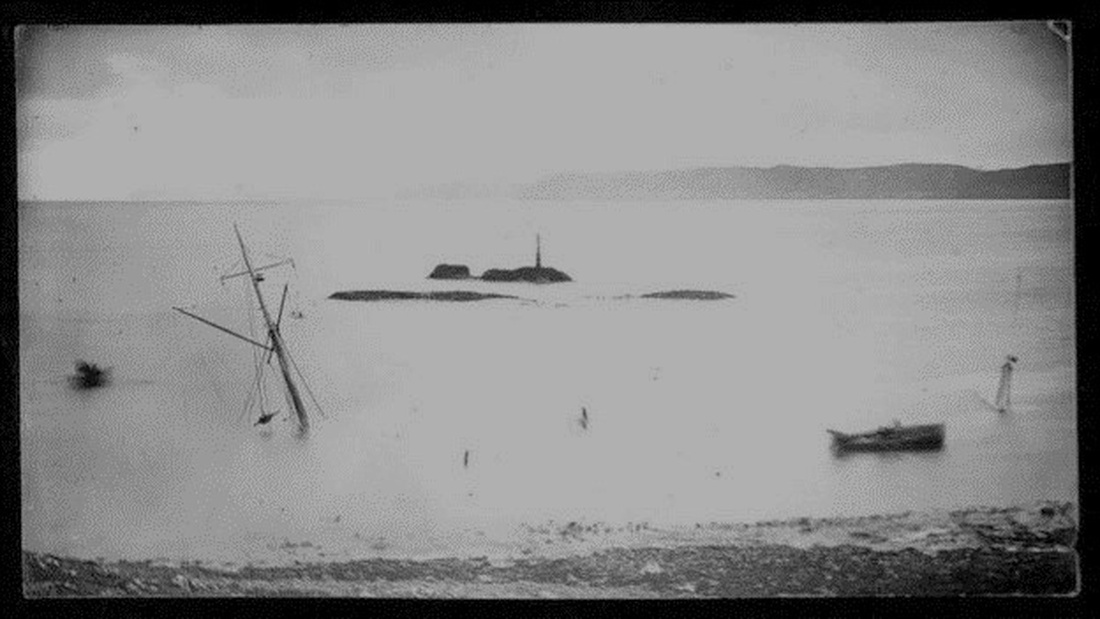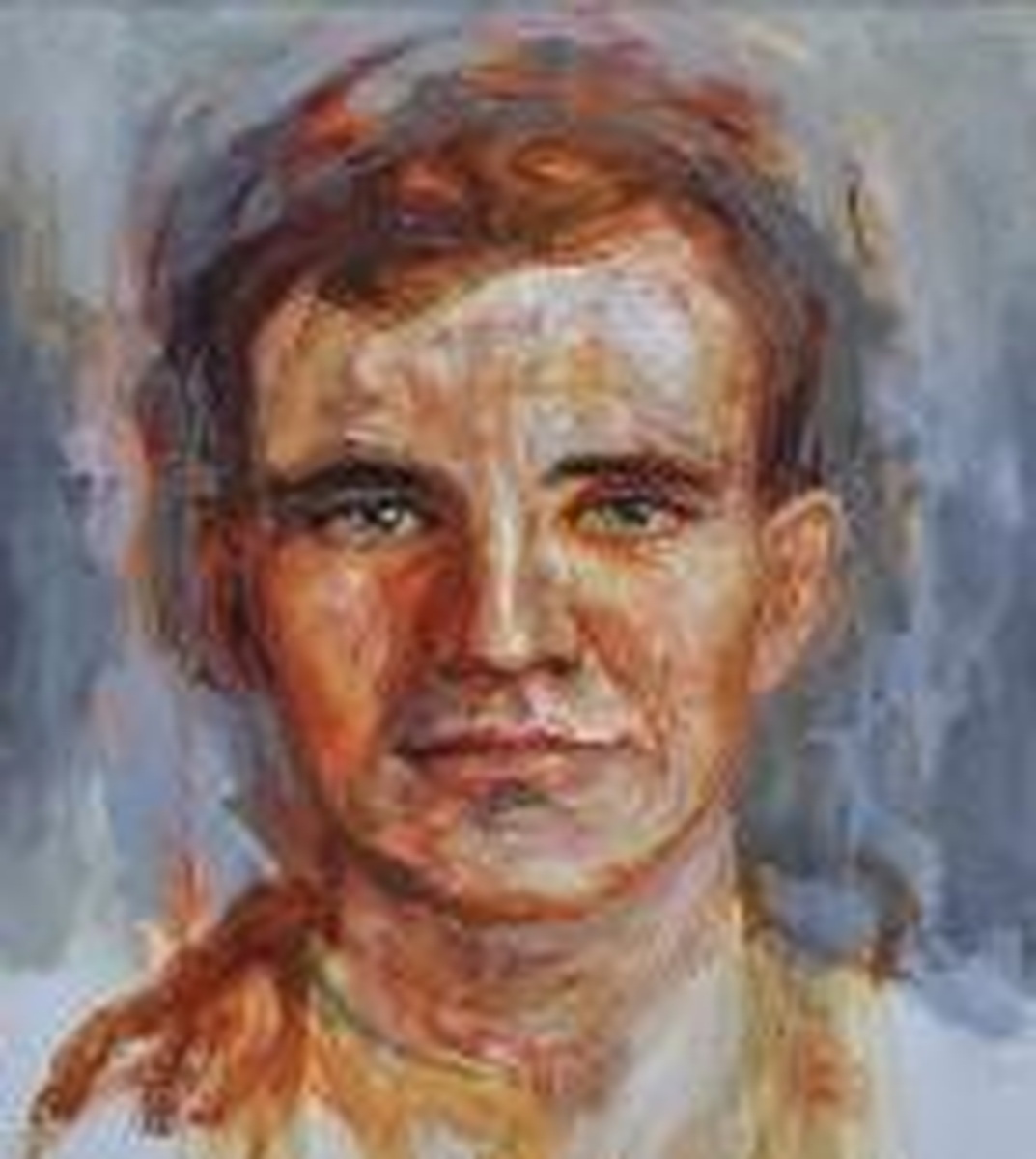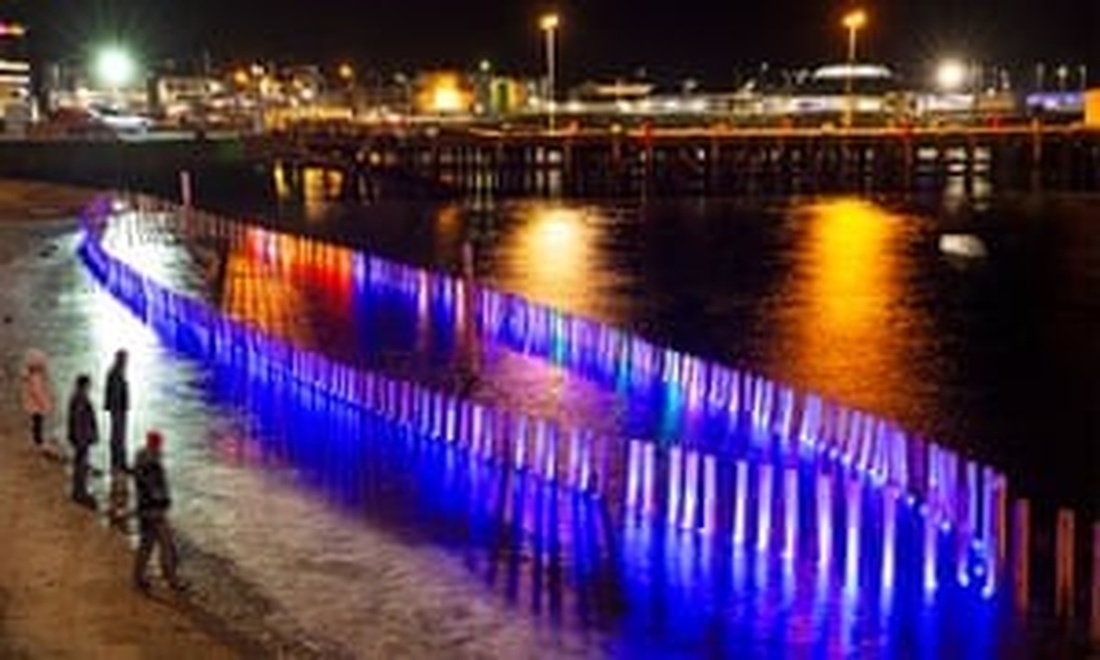Auction: 22003 - Orders, Decorations and Medals
Lot: 374
NEW YEAR'S DAY 1919: LOSS OF THE "IOLAIRE"
'It was beautiful morning after a terrible stormy and dark night, and lying on the shore were the bodies of the sailors that were washed ashore, and the toys which they had been longing to bring home to their children, and hats belonging to the sailor-boys, strewn along the beach. I can remember that as vividly as if it were today. It was a tragedy. The whole island felt it, the sadness - you could feel it in the air.'
Anna MacAulay recalls the loss of H.M. Yacht Iolaire, 50 years on, as quoted in John MacLeod's When I Heard the Bell.
A poignant Great War campaign group of three awarded to Seaman Murdo MacKay, Royal Naval Reserve, a victim of the tragic loss of H.M. Yacht Iolaire off Stornoway on New Year's Day 1919
The Iolaire was bringing home to the Hebrides nearly 300 naval veterans of the Great War, their families awaiting in anticipation the return of their loved ones. But she never made it, running aground on rocks at the entrance to the harbour in a gale, with a loss of 205 of her passengers and crew
It was a crushing blow for the inhabitants of the Isle of Lewis - raising local wartime loss amongst its menfolk to one thousand. No wonder the disaster has since attracted considerable attention, a plethora of related publications, including John MacLeod's compelling history, When I Heard the Bell: The Loss of the Iolaire, in addition to a moving B.B.C. documentary released in 1973
1914-15 Star (B.4511. M. MacKay, Smn., R.N.R.); British War and Victory Medals (4511B M. MacKay, Smn., R.N.R.), together with the recipient's Memorial Plaque (Murdo MacKay), the plaque drilled in two places and fixed to board with wire, otherwise extremely fine (4)
Murdo MacKay was born at Swordale Point, a crofting township, south-west of the Eye Peninsula on the Isle of Lewis on 16 July 1886, the son of Angus and Christian 'Christy' MacKay. A fisherman by trade, he enrolled in the Royal Naval Reserve as a Deck Hand in March 1907 and, following active service in the Great War, was embarked in H.M. Yacht Iolaire for the Isle of Lewis on New Year's Eve 1919.
Loss of the Iolaire
The subsequent sinking of the yacht at the entrance of Stornaway harbour on the Isle of Lewis, after she had hit rocks at 2.30 a.m., was one of the worst maritime disasters in United Kingdom waters during the 20th century. Although she came to grief just yards from shore, the appalling weather and sea conditions resulted in heavy loss of life. At least 205 out of the 284 men on board perished - most of them Royal Navy Reservists.
John Macleod from Ness, Isle of Lewis, saved 40 lives, swimming ashore with a heaving line, along which many of the survivors made their way to safety. Only 82 of the 283 - officially known - passengers survived and the impact of the disaster was devastating to the Islands, representing almost an entire generation of young men. Many songs and poems have since described the women of these men finding their corpses washed up on the shore the next day.
An Admiralty enquiry found no satisfactory explanation for the disaster. Its inconclusive findings generated much ill-feeling amongst the Lewis population, amidst accusations of a "whitewash". While drunkenness among the crew was discounted at the enquiry, the vessel was sailing at night, in poor visibility and in deteriorating weather. The entrance to Stornoway harbour is not the most straightforward of navigations and it is possible that navigational error was to blame. This hypothesis appears to be supported by the crew of a fishing vessel who noted that Iolaire was not following the correct course for entering the harbour.
In Memoriam
A memorial was erected in 1958 at Holm, outside Stornoway and a stone pillar stands out of the water at the site of the wreck, which can be seen to starboard as the car ferry approaches the harbour entrance.
The community-led commemoration of the centenary was marked in a number of ways including by musicians such as Julie Fowlis and Duncan Chisholm, as well as local artists such as Malcolm Maclean and Margaret Ferguson. The disaster has been included in the Arts and Humanities Research Council "Living Legacies (1914-18)" project, led by Abertay University and The Centre for History, University of the Highlands and Islands and the resulting App highlights the nature and extent of the loss felt by families and communities.
A national commemorative service was held at the memorial on 1 January 2019 to mark the centenary of the disaster, attended by First Minister of Scotland Nicola Sturgeon and Prince Charles, Duke of Rothesay, who unveiled a new memorial at Holm which depicts the rope used by John MacLeod to save 40 lives.
Postscript
On the occasion of the 100th anniversary of the Iolaire's loss on 1 January 2019, the following article, by Severin Carrell, appeared in The Guardian:
'Margaret Ferguson's family home on the Isle of Lewis was crowded with portraits. There were more than a hundred, and each was of a man looking out from the canvas. Veterans of the First World War, each man drowned on the same night, on the same boat, a short distance from safety.
In heavy seas and a pitch-black night, an overcrowded steam yacht taking them home on leave, the Iolaire, struck a treacherous reef known as the Beasts of Holm in the early hours of New Year's Day 1919. They were barely a mile from Stornoway harbour and 50 yards from the shore, and of the 280 men on board, only 79 survived.
It remains the U.K.'s worst peacetime maritime disaster since the sinking of the Titanic - and is being marked by an official ceremony on Tuesday. Yet a century on, the story of the Iolaire is barely known beyond the Western Isles, despite its scale and horror.
Its memory was suppressed too for generations on Lewis: every family, in a still tightly knit community, was either directly affected or knew someone who had died. Until quite recently, it was rarely, if ever, discussed.
"It is very, very deep within us. In fact, when I think about it, I get a tightness in my chest. The tears are just below the surface," Ferguson said.
Ferguson, a painter and a widely respected family doctor on Lewis for the last 30 years, said she felt compelled to make the portraits, using black and white family photographs and an archived roll of honour from the Stornoway Gazette, published in the 1920s. Her great-great uncle, Alexander Mackenzie, is among them.
She stored the pictures in her family's uninhabited ancestral home on the Point peninsula, which overlooks the seas the Iolaire sailed that night, before being exhibited in Stornoway from 31 December until 2 March [2019], one of a series of commemorative events to mark the centenary of the disaster.
In Stornoway harbour, 280 illuminated columns are fixed on to the seabed, sketching the outline of the Iolaire's hull: 201 of those columns have been lit in blue for those who died while 79 remain white for those who survived. Designed by Malcolm MacLean and Torcuil Crichton, the lighting effect on the artwork, named Sheòl an Iolaire, Gaelic for "the Iolaire sailed", changes as the tide comes in and recedes.
The commemorations, among the last being staged to mark the centenary of the First World War, include a New Year's Day service overlooking the site, which will be attended by Prince Charles and Nicola Sturgeon, Scotland's first minister.'
Recommended reading:
When I Heard The Bell: The Loss of the Iolaire, by John MacLeod (Birlinn, 2010).
Also see:
https://www.theguardian.com/uk-news/2019/jan/01/tears-just-below-surface-iolaire-tragedy-remembered-isle-lewis
https://www.bbc.co.uk/news/uk-scotland-46522918
Subject to 20% VAT on Buyer’s Premium. For more information please view Terms and Conditions for Buyers.
Sold for
£1,500
Starting price
£300


